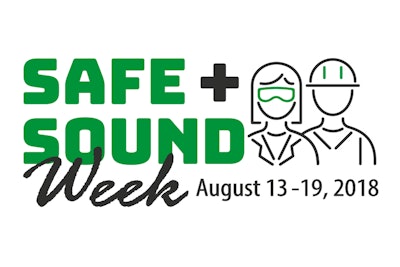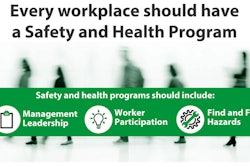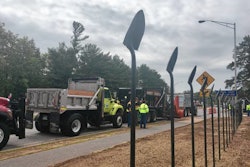
Every workplace should have a safety and health program that includes management leadership, worker participation and a systematic approach to finding and fixing hazards. In 2016, there were 69 fatal injuries and 10,700 estimated nonfatal injuries and illnesses among 319,300 employees (U.S. Bureau of Labor Statistics). Finding and fixing hazards ensures workers go home safe and sound every day. Use the information below to find and fix hazards in your company.
According to OSHA, these are the Top Citations for Highway, Street and Bridge Construction:
- Written program and employee information. (Hazard Communication, 1910.1200(e) and (h))
- Energy control program. (The Control of Hazardous Energy, 1910.147(c)(1))
- Rated load of jacks must be legibly and permanently marked in a prominent location. (Hand and Portable Powered Tools and Other Hand-Held Equipment, 1910.244(a)(1)(ii))
- Instruction of employees in the recognition and avoidance of unsafe conditions. (Safety training and education, 1926.21(b)(2))
In addition, these are the Top Injury Events in Highway, Street and Bridge Construction:
Fatal Events:
- Pedestrian vehicular incidents and roadway motor vehicle incidents
- Struck by object or equipment
- Falls to lower level
Nonfatal Events:
- Contact with object or equipment
- Overexertion and bodily reaction
- Falls to lower level or same level
- Slips or trips, without fall
- Roadway incidents involving motorized land vehicles
10 Ways to Get Started
If you are not quite ready to implement a complete safety and health program, here are some simple steps you can take to get started. Completing these steps will give you a solid base from which to take on some of the more structured actions you may want to include in your program.
1. Establish safety and health as a core value. Tell your workers that making sure they finish the day and go home safely is the way you do business.
2. Assure them that you will work with them to find and fix any hazards that could injure them or make them sick.
3. Lead by example. Practice safe behaviors yourself and make safety part of your daily conversations with workers.
4. Implement a reporting system. Develop and communicate a simple procedure for workers to report any injuries, illnesses, incidents (including near misses/close calls), hazards, or safety and health concerns without fear of retaliation. Include an option for reporting hazards or concerns anonymously.
5. Provide training. Train workers on how to identify and control hazards in the workplace, as well as report injuries, illnesses, and near misses.
6. Conduct inspections. Inspect the workplace with workers and ask them to identify any activity, piece of equipment, or materials that concern them. Use checklists to help identify problems.
7. Use the above areas where injuries occur most in Highway, Street and Bridge Construction to collect hazard control ideas. Ask workers for ideas on improvements and follow up on their suggestions. Provide them time during work hours, if necessary, to research solutions.
8. Implement hazard controls. Assign workers the task of choosing, implementing and evaluating the solutions they come up with.
9. Address emergencies. Identify foreseeable emergency scenarios and develop instructions on what to do in each case. Meet to discuss these procedures and post them in a visible location in the workplace. Seek input on workplace changes. Before making significant changes to the workplace, work organization, equipment, or materials, consult with workers to identify potential safety or health issues.
10. Make improvements to the program. Set aside a regular time to discuss safety and health issues, with the goal of identifying ways to improve the program.



















